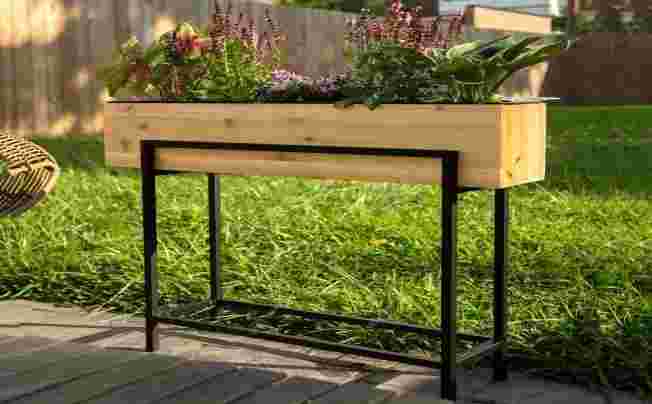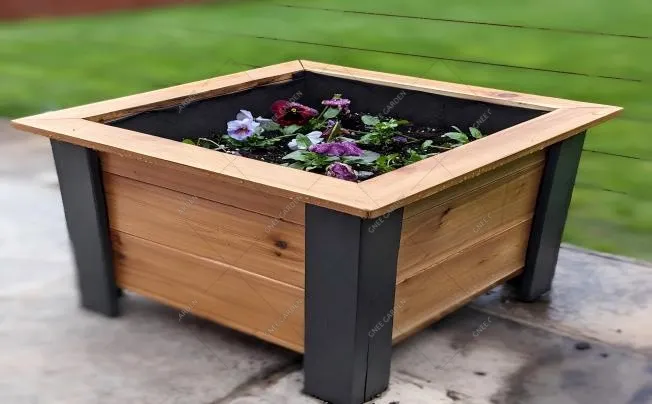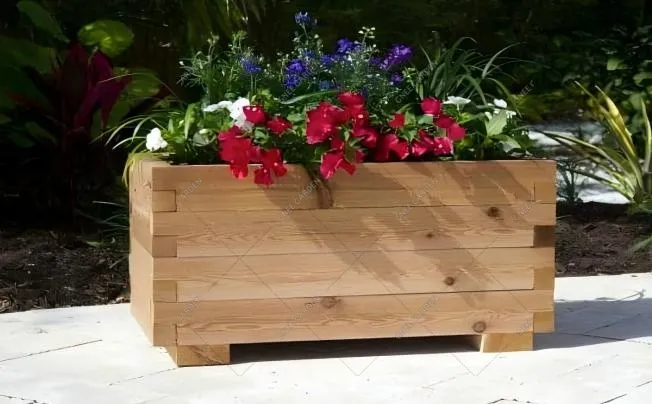How Do You Keep A Planter Box From Rotting?
One of the most annoying issues while growing flowers is pot rot. It is comparable to a covert "enemy" endangering the robust growth of plants.
Choose the right material and lay a good foundation
The key to preventing rot in daily maintenance
The amount of water needed by different plants varies. Less regular watering is required for drought-tolerant plants, and they frequently need to wait until the soil is fully dry before watering. Frequent watering will cause water to build up in the flowerpot for a long time, suffocating the roots under the water's "flooded" cover and causing the flowerpot's material to rot and become damp. Humidity is preferred by water-loving plants. Water must be added promptly after the soil top starts to dry up a little, but care must also be taken to prevent water buildup at the pot's bottom. To help with drainage and guarantee the proper amount of water, a drainage layer can be placed at the bottom of the pot.
Another important component influencing how often to water is seasonal variation. The temperature rises sharply and the water quickly evaporates during the hot, dry summer. The transpiration of plants is boosted to sustain physiological processes. The frequency and quantity of irrigation must be increased at this time. To ensure that the plants receive the water they need on time, water them once in the morning and once in the evening. In order to keep the root system from being harmed by extreme temperature fluctuations, do not water during the midday hours of the day. Plants go into a "dormant period" when the chilly winter draws near, slowing down their growth. The demand for water is significantly decreased. In order to avoid the soil from freezing and harming the roots and flower pots, a little water is usually sprayed on them every one to two weeks.
It's important to consider the flower pots' dimensions and composition. In contrast to small flower pots, which lose water quickly and require more frequent attention to the soil's wet and dry conditions, large flower pots hold more soil, have a strong water storage capacity, and have slower water evaporation, allowing for a longer watering interval. It is possible to water clay flower pots more frequently since clay has strong air permeability and water evaporates easily; plastic flower pots have weak air permeability, therefore watering should be limited and it is preferable to dry rather than wet to prevent water buildup. The best way to determine when to water is to look at the condition of the soil. Put your finger two to three centimetres into the ground. You can lightly tap the flower pot or use it as a signal to water if it seems dry. A dull sound means there is enough water, whereas a sharp sound means there is not. Establishing a strong foundation for the well-being of plants and flower pots requires mastering scientific watering techniques.

The complementary effects of light and ventilation
In order to maintain the flower pots fresh at all times, adequate ventilation can function as invisible hands, swiftly removing excess moisture from the soil and surrounding the pots. The risk of rot is significantly decreased in an atmosphere with good air circulation since water evaporates more quickly and the flower pots are unlikely to stay wet for an extended period of time. Air circulation can be efficiently encouraged by setting flower pots close to windows, balconies, and other vents, or by utilising tiny fans to produce an artificial breeze. In order to prevent prolonged soaking of the flower pot material by water, prompt ventilation, particularly after watering, can rapidly evaporate the collected water in the flower pots. This is similar to "quick air drying" for the flower pots.
The sun's UV rays have the power to directly destroy or suppress dangerous microorganisms like mould and bacteria that are present in the soil and on the surface of flower pots, hence minimising soil erosion. The majority of plants require 4–6 hours of sunshine per day. In addition to providing for the growing requirements of plants, flower pots placed in sunny locations, like patios and balconies facing south, can also completely benefit from the "baptism" of sunlight. However, adequate cover is necessary during the hot summer months to keep the flower pots from drying out and deteriorating from sun exposure, which shortens their lifespan. Certain plants that can withstand shade cannot have all of their light blocked. To guarantee that ventilation and moderate light combine to create a healthy microclimate for the flower pots and plants, you can decide to position the flower pots in an area with enough diffused light.

Regular flower pot inspection
To preserve the health of flower pots and avoid rot, thorough and frequent checks are essential.
Check the flower pot's surface closely each time you water it for any new water stains, bacterial plaques or mildew spots. These could be early indicators of excessive water buildup and microbial growth. For flower pots made of wood, check for signs of cracking or deformation in the wood texture; for flower pots made of ceramic, check for peeling of the top glaze. Make sure to inspect plastic flower pots for any strange colour changes because water can quickly infiltrate through microscopic cracks and cause internal damage. Brittleness and whiteness may be signs of deteriorating ageing and a diminished ability to resist corrosion.
It is important to consider the flower pot's structural soundness in addition to its aesthetic appeal. Check for cracks or holes by gently tapping the flower pot and hearing the sound. While a dull and hoarse sound could be a sign of internal damage, a crisp and even sound typically suggests that the flower pot has a stable construction. Feel the flower pot's weight fluctuate as you move it. It's possible that the bottom drainage layer is washed away or that the material is dissolved and lost in a humid climate if the flower pot suddenly becomes lighter for no apparent reason. Future decay could be concealed by these minor alterations. The drainage hole serves as the flower pot's "drainage lifeline" and is the area that is examined. To guarantee unhindered drainage, regularly clear the dirt and debris that have gathered around the drainage hole. To avoid obstruction and encourage water to return to the pot, you can carefully clear it with a thin wire or little bamboo stick. To keep the flower pot in good condition and offer sturdy support for plant growth, you must act quickly if you notice that the drainage hole's speed has slowed down or even stopped draining. If this happens, you should replace the bottom material, move the flower pot, and keep it out of the "water prison" for an extended period of time.

Selected Blogs
-
What customization services are available for metalworking customization?
2024-12-12
-
What Is The Difference Between A Plant Container And A Raised Bed?
2024-04-23
-
Garden Screening & Fence Panels
2024-04-23
-
Gardening pot selection tips
2024-04-17
-
The function and collocation of horticultural fire pot
2024-04-17


